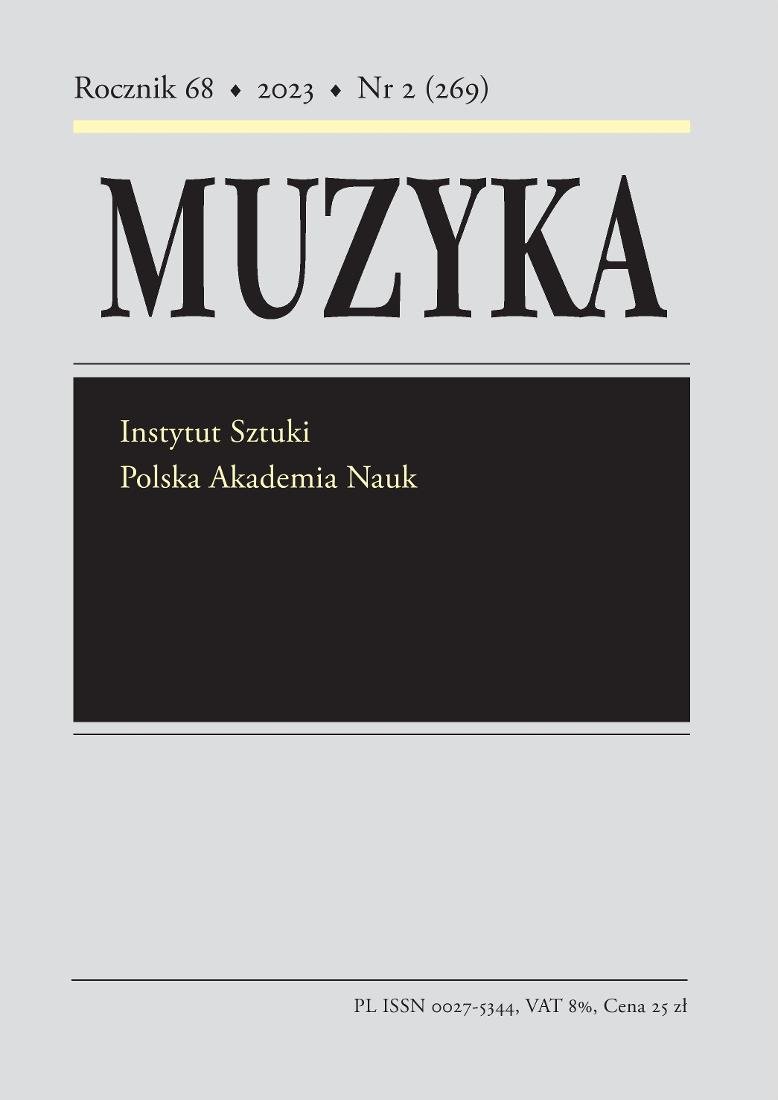Chopin, taniec i piosenka, czyli o muzyce filmowej Andrzeja Panufnika z lat międzywojennych
Chopin, Dance, and Song: Andrzej Panufnik’s Film Music before World War II
Author(s): Iwona LindstedtSubject(s): Music, Film / Cinema / Cinematography
Published by: Instytut Sztuki Polskiej Akademii Nauk
Keywords: Andrzej Panufnik; Eugeniusz Cękalski; Stanisław Wohl; Polish film music before 1939; song in movies
Summary/Abstract: Though not very large (short films Warszawa jesienią / Warsaw in the Autumn and Trzy etiudy Chopina / Three Chopin Études as well as one feature film titled Strachy, variously translated into English as Spooks, The Ghosts or Anxiety), Andrzej Panufnik’s film music output from the interwar period left a major imprint in the history of the Polish cinema. The soundtracks were written for movies whose artistic and social ambitions went beyond the much-criticised standards of the so-called ‘film industry pulp’ (Pol. kino branżowe). The soundtrack of the first of these, the 1935 short directed by Leon Jeannot, is unknown since no copy has been preserved to our day. Panufnik only commented that it was lyrical music for ten instruments, meant to represent the colours and atmosphere of autumn. The other short film, Trzy etiudy Chopina of 1937, though likewise lost, presents more issues. A key factor in Panufnik’s collaboration with Eugeniusz Cękalski and Stanisław Wohl was the fact that the composer had a strong sense of responsibility for the final shape of the movie (he was, as he recalled, ‘a co-author of the script’ and originator of many ideas concerning sound-and-image synchronisation). Nevertheless, Panufnik’s name was omitted from the ‘show’ version awarded at a festival in Venice. This paper discusses the movie, draws conclusions concerning the reasons for Panufnik’s ‘exclusion’ from the list of its authors, and attempts a reconstruction of the final version of Trzy etiudy Chopina, including the identification of the Chopin pieces correlated with the image in an experimental fashion, and the order in which they appeared. Most attention has been dedicated in the paper to Panufnik’s third work for the Polish 1930s film industry, his music for Strachy (1938, dir. Eugeniusz Cękalski and Karol Szołowski), a production based on Maria Ukniewska’s popular novel. Since the film still exists, it has been possible to analyse its soundtrack, varied in terms of style and genres, with particular emphasis on the way in which the material of the main song and other leitmotifs was used throughout the movie. In this way, the importance of Panufnik’s contribution to the artistic and commercial success of Strachy can also be assessed
Journal: Muzyka
- Issue Year: 68/2023
- Issue No: 2
- Page Range: 3-23
- Page Count: 21
- Language: Polish

